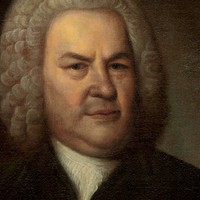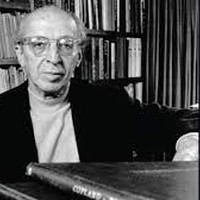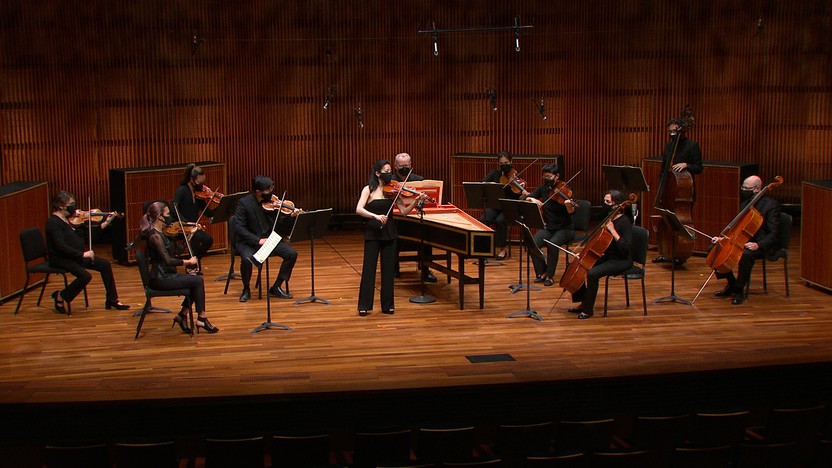Details

Johann Sebastian Bach
Oboe Concerto
From 1723 until his death in 1750, Johann Sebastian Bach held the demanding position of Thomaskantor, directing music for the principal churches of Leipzig and training the young choristers under his care. Somehow Bach also found the time to direct the Collegium Musicum, an amateur ensemble founded by Georg Philipp Telemann back when he was a student in Leipzig. With most concerts held at a coffee house, the Collegium Musicum provided Bach a space where he could present secular music not fit for church, including the seminal concertos for harpsichord that he wrote to feature himself and his talented sons.
Bach’s harpsichord concertos from the 1730s were not wholly original works, but rather rearrangements of existing scores. His source material has been lost, but often there are enough clues in the music to allow for a reconstruction of what might have existed decades earlier, when Bach wrote concertos for his jobs in Weimar and Cöthen. The task of reconstruction took extra imagination in the case of the Harpsichord Concerto cataloged as BWV 1059, since Bach only copied out the first nine measures in the surviving draft. Those measures corresponded to the opening Sinfonia (or overture) from a cantata that Bach wrote in 1726 for a Sunday church service, in a rendition that uses organ as the featured solo instrument. That cantata also has a second Sinfonia that again features solo organ, forming a matched pair that points to an origin as the outer movements of a three-movement concerto from earlier in Bach’s career. The organ solo makes sense in a church context, but wherever Bach first used this music, he would have more likely featured oboe as the solo instrument.
The slow movement of the concerto required extra leaps of logic to reconstruct, following the hunch that it was the source material for an alto aria from the same cantata. It’s a very modern phenomenon to think in terms of “Great Composers” and the sanctity of the “Classical Canon,” and efforts like this Bach reconstruction are an excellent reminder that these immortal creations were created by busy working musicians who did whatever it took to get parts onto music stands in time for the next gig, with a much more malleable concept of how to make the most of their musical assets.
Aaron Grad ©2022
 Listen to Audio
Listen to Audio
Pēteris Vasks
Fantasy for Violin and Strings, Vox amoris (Voice of Love)
Pēteris Vasks began his musical career as a bass player, performing with ensembles in his native Latvia and neighboring Lithuania. He eventually went back to school for composition, and since the late 1970s he has produced a remarkable body of instrumental music while also training the next generations of Latvian composers at a conservatory in Riga. His international reputation received a huge boost after the violinist Gidon Kremer premiered Vasks’ concerto Distant Light and then recorded the work with his ensemble Kremerata Baltica for ECM Records in 1999. The composer provided the following program note.
I started composing the fantasy for violin and orchestra Vox amoris in fall 2008 and finished the score in early spring 2009. What is the message I wanted to announce? It is about the greatest power in the whole world — love. Love is, was, and will be as long as we will be. I believe that solo violin and string orchestra make the best combination for a “love story.”
The composition, in one single movement, starts with a muted string tremolo. Then the solo violin appears — searching, asking, until it blossoms in a broad melody which is supported by a gentle orchestral accompaniment. The solo violin Cadenza I links the introductory part with the central episode. The central part of the composition is built up from two sound waves. The first wave starts softly, slowly, and then the intensity increases, becomes stronger, and then decreases. The second wave is broader, more dramatic. The solo violin part becomes more challenging; the string orchestra plays an active role here. Cadenza II emphasizes the way to culmination — the highest point is reached when the solo violin and the orchestra meet — in a high register, in the highest intensity. A quiet pedal point is then the background for images from the beginning. The solo violin once again sings a cantilena of the glory of love. The piece ends in a melancholic yet light mood.
Vox amoris was created by initiative of the Australian Chamber Orchestra and its leader Richard Tognetti. I hope this work will reach the listeners and make the world a little brighter and more open to love.
© Pēteris Vasks
Aaron Grad ©2022
 Listen to Audio
Listen to Audio
Aaron Copland
Suite from Appalachian Spring (24 min)
In the wake of two well-received ballets set in the American West — Billy the Kid (1938) and Rodeo (1942) — Aaron Copland began Appalachian Spring in 1943. He created the ballet for the dancer and choreographer Martha Graham, and he worked under the title Ballet for Martha until not long before the premiere, when Graham suggested Appalachian Spring, borrowing a phrase from Hart Crane’s poem “The Bridge.”
Created for the 500-seat auditorium at the Library of Congress in Washington, DC, this ballet needed a suitably compact pit orchestra, so Copland used just thirteen instruments in the original version. The next year he arranged most of the ballet into a concert suite for orchestra, and his publisher later added the option heard here, which preserves the original chamber ensemble scoring while adopting the structure of the concert suite.
The wonder of Appalachian Spring is how it achieves so much using such simple and familiar musical ingredients. The first section assembles its hazy wash of consonant sonorities by enunciating plain triads and the resonant intervals of fourths and fifths. The following section energizes similarly basic materials — octave leaps, triadic intervals and descending major scales — into spry dance music. There is a tender scene for the young couple, a lively romp depicting the revivalist and his dancing minions, and then a brisk solo dance for the bride, which dissipates into a return of the gentle, triadic wash of the beginning.
The famous section that follows, starting with a theme in the clarinet, presents the tune of Simple Gifts, a Shaker dance song written in 1848 by Joseph Brackett. The humble melody fits seamlessly into the homespun, diatonic language of Copland’s score, and its increasingly grand variations rise to a transcendental climax.
Aaron Grad ©2024
About This Program
Centuries apart and worlds away, these seemingly disparate composers share something in common: the skill of portraying character through music. Enjoy a program that moves from the pastoral calm of the seventeenth-century German composer Johann Sebastian Bach’s Oboe Concerto to the universal voice of love portrayed by the violin in Vox amoris (Voice of Love) by twentieth-century Latvian composer Pēteris Vasks. The SPCO then reprises a fan favorite, Aaron Copland’s Appalachian Spring, for audiences of our Neighborhood Series venues.
All audience members and SPCO staff will be required to wear non-cloth masks (N95, KN95, KF94 or surgical masks). Proof of vaccination, booster or a negative COVID-19 test result will no longer be required. More Information
Concerts are currently limited to 50% capacity to allow for distancing. Tickets are available by price scale, and specific seats will be assigned and delivered a couple of weeks prior to each concert — including Print At Home tickets. Please email us at tickets@spcomail.org if you have any seating preferences or accessibility needs. Seating and price scale charts can be found at thespco.org/venues.



